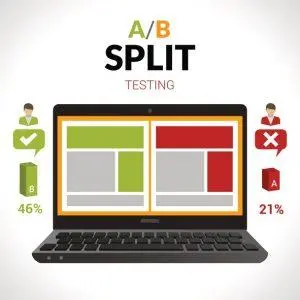Are you frustrated with the performance of your pay per click (PPC) advertising campaigns? Tired of wasting money on clicks and not seeing the boost in sales you were hoping for?
The problem with PPC advertising is that it’s quick and easy to set up a campaign but tricky to get right. In fact, the smallest mistakes can end up costing your practice thousands of dollars in wasted clicks.
While mastering medical PPC advertising takes time, avoiding the most common errors can help save your practice money right away—not to mention attract more patients.
Here are four common mistakes to avoid.
1. Using broad match keywords in your PPC ads

Say you own an audiology practice in Texas and you’re setting up a PPC campaign. An obvious keyword you’d want to target is “audiologist,” and you’d like to capture the searches for this keyword.
Here’s the problem: while this keyword will capture searches by patients looking for audiology services, it will also capture searches like “audiologist jobs,” “audiologist salary,” and other phrases searched for by practitioners rather than by patients.
This type of “broad match” keyword strategy is going to cost you a lot of worthless clicks. The better strategy would be to target exact phrases like “audiologist in Austin, Texas” or by specifying what are called negative keywords. In this example, you could use the negative keyword “jobs,” so that your ads won’t be displayed for searches like “audiologist jobs.”
Google offers several keyword match types, including broad match modifier, phrase match, exact match, and negative match. It’s worthwhile to check these out so that your ads will only be displayed for the searches that you know will result in qualified leads.
2. Sending PPC traffic to the wrong web page
There is a strong connection between your PPC ads and the web pages they link to (the landing pages). Google evaluates this in a couple of ways.
First, if your PPC landing page has a high bounce rate (the percentage of users that immediately exit the page after arrival), this tells Google that the page may not be relevant to the PPC ad.
Second, if the content of the landing page doesn’t match the content of the PPC ad, Google will lower your Quality Score and Ad Rank.
Google uses your Quality Score to partly determine the price you pay for each click, so you’ll want to get this number as high as possible. Improving the relationship between the PPC ad and the landing page, then, can reduce your PPC costs significantly.
Further, sending clicks to the right page will increase conversions. If a prospective patient clicks on an ad for hearing aids, for example, and you send them to a contact page with no information about hearing aids, three things are going to happen:
- The patient will probably hit the back button, and you’ll lose out on a potential new patient.
- The bounce rate of your landing page (in this case the contact page) will increase, sending a negative signal to Google.
- Google will see the discrepancy in content between the PPC ad and the landing page, decreasing your Quality Score and increasing your costs per click.
If you send that patient to your web page on hearing aids, on the other hand, the patient is more likely to contact you, the bounce rate on the page goes down, and Google gives you a higher Quality Score (which can translate into lower costs) and Ad Rank (which means your ads are more likely to be seen).
3. Writing poor PPC ad copy
Sometimes the problem isn’t with the landing pages. The PPC ads themselves, if poorly written, will either be ignored or will lead to a landing page not related to the ad content.
The key to writing effective PPC ad copy is to keep the big picture in mind. Remember that there should be a strong match between:
- The keywords your patients are searching for and their intent when searching.
- The relevance of your PPC ad copy to both the searcher intent and the landing page.
- The relevance of the landing page to both the PPC ad copy and the searcher intent.
Let’s look at an example. A patient searches for “hearing aids in Austin, Texas.” The intent of the search is likely to find information on hearing aids and where they can be purchased in the Austin area. In this case, you want to send this patient to your main page on hearing aids, not to your home page or contact page.
Your PPC ad, in this case, is standing between your patient’s reason for searching and your hearing aids landing page. The objective of your copy is to show the patient that their questions will be answered if they click your ad.
So, the first rule is to put the keyword in your title. When the keyword is searched, it will be bolded in your title, helping your ad to stand out. The keyword can also be included in the description and will be bolded there as well.
Next, the description should include some or all of the following: an offer, a benefit, and a call-to-action.
In terms of offers or benefits, think about your patients’ top concerns. Using the hearing aid example, let’s say affordability is your patients’ most frequent concern. In this case, you might consider the title “Hearing Aids – Personalized to Fit Your Budget” or something similar.
Last, include a call-to-action with the text “call now,” “schedule an appointment,” or something similar to prompt the user to take action.
4. Not split testing and optimizing
The truth is, you can read PPC articles and advice all day, but the only way to see if your ad will work is to test it. You may think you’ve written the perfect ad—only for it to tank. Then, out of nowhere, an ad you weren’t counting on performs beyond all expectations. That’s the way PPC advertising works.
The downside to this is that for PPC to be effective, it takes a lot of work and testing. The positive side is that your PPC will get better and more cost-effective over time if you take the time to split test your ads. Here’s a very brief overview on how to split test.
First, establish the metrics you’re going to use to evaluate the performance of your PPC ads. A good place to start is by tracking the CTR (click-through-rate), the conversion rate, and the cost per conversion.
Then, create PPC ad variations by changing the titles, descriptions, and display URLs. Try out different combinations, run the campaign, and then keep the ads that perform the best, ditch the ones that don’t, incorporate the best elements of each ad, and repeat the process.
We’ll cover split testing in more detail in a future post, but for now feel free to just experiment with a few variations. Create a couple of different ads with distinct titles and descriptions and measure the results.
PPC advertising can be complex, time-consuming, and in constant need of attention and testing. But it’s also the best way to get to the top of Google search and reach the patients in need of your services.
If you’d like to take advantage of PPC advertising, or if you’re not satisfied with your current PPC performance, Talk to us today.




